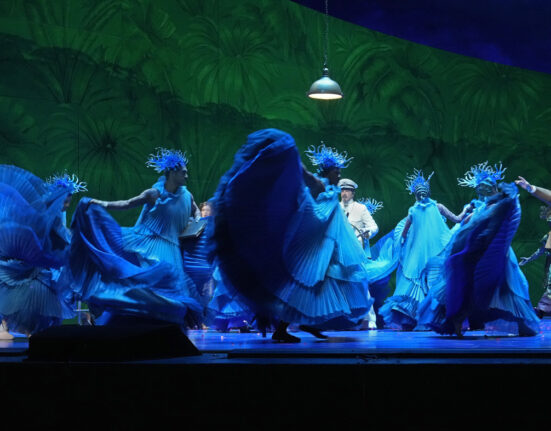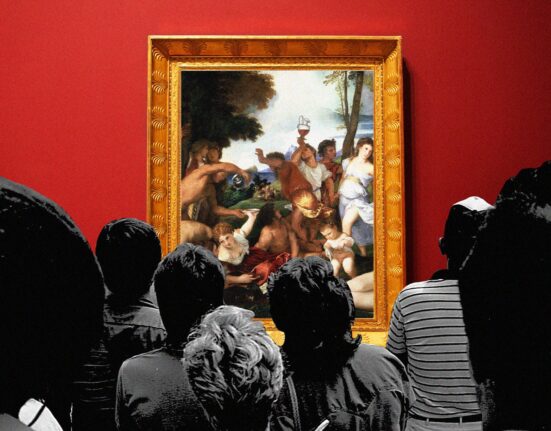Spanning a staggering three decades, the Thirty Years’ War left an unforgettable mark on European history as one of the most prolonged and destructive conflicts ever witnessed. From 1618 to 1648, Central Europe became the battleground for a fierce struggle that claimed the lives of an estimated 4.5 to 8 million individuals, encompassing soldiers and civilians alike. The toll of battle, famine, and disease ravaged communities, with some regions experiencing population declines of over 50%. Created between 1638 and 1639 by the renowned Belgian-German painter Peter Paul Rubens, ‘Consequences of War’ is a harrowing yet breathtaking masterpiece that captivates viewers with its visual spectacle while evoking profound emotions of anguish, brutality, grief, and tragedy. Painted in the style known as “Flemish Baroque,” (in which paintings portrayed robust and detailed images of the world) this magnificent oil on canvas is proof of Ruben’s artistic genius. Commissioned by Ferdinando II de’ Medici, the esteemed Grand Duke of Tuscany, the painting carries a hefty significance to date. How does it resonate with the historical context of its time and serve as a powerful commentary on the devastating consequences wrought by the Thirty Years’ War?
What made Rubens paint this masterpiece is the sheer impact of the Thirty Years’ War. The origins of this turbulent period were intricate, intertwined with religious divisions and power struggles that shaped the course of history. The clash between Protestants and Catholics fueled the flames of animosity, while political ambitions further fueled the fire, extending and prolonging the war’s duration. Throughout the long span of the conflict, nearly all European states found themselves entangled in its web. From Spain to France, Sweden to Denmark, the Netherlands to Austria, Poland to the Ottoman Empire, and the Holy Roman Empire, nations clashed in a stormy dance of power and survival. The rivalry between the Habsburg and Bourbon dynasties simmered, while deep-seated enmity between France and the Habsburgs added fuel to the raging inferno.
Amidst this chaos and bloodshed, the consequences were dire. As depicted in Rubens’ masterpiece, ‘Consequences of War’, vast regions of Europe fell victim to destruction, ravaged by battle, disease, and famine. Nowhere was the devastation more palpable than in the German states, which bore witness to significant depopulation and the decimation of once-thriving communities. But like all conflicts, the Thirty Years’ War eventually came to an end. In 1648, the treaties of Osnabruck and Munster, along with the Peace of Westphalia, marked the turning point. The warring parties sought solace in negotiation and compromise, seeking to mend the wounds inflicted upon a fractured continent.
Yet, the echoes of this monumental struggle would reverberate throughout history, forever leaving an indelible mark on the European landscape. ‘The Consequences of War’ painting served as a poignant reminder of the trials tolerated, a visual testament to the human cost and the desire for peace that emerged from the ashes of conflict.
Symbolism plays a big role in this masterpiece and the artist ensured each symbol speaks a thousand words. Rubens chose the Roman God of War, Mars and the Goddess of Love, Venus to represent the scene of the battle. Mars commands the attention of all who gaze upon the canvas. With a powerful stance, he stands at the forefront, his imposing figure casting a shadow over the chaotic scene of battle below. His sword gripped firmly in his hand, points downward, directing the viewer’s gaze toward the harrowing turmoil that unfolds. Mars’ gaze is drawn backwards, fixating upon a captivating sight—a stunning and vulnerable depiction of Venus. Resting her head upon Mars’ sturdy shoulder, Venus gazes up at him with a pleading expression, her delicate features silently urging him to cease the madness he has wrought upon mankind.
Hovering above Venus, cherubic children create a contrasting tableau. Their soft, ethereal bodies, clothed in pristine white, stand out against the gritty backdrop of war. The contrasting colour scheme of muted greys, browns, and dirty greens dominates the scene, emphasising the divide between the violence and the purity represented by Venus and the cherubs.
Rubens’s Consequences of War showcases the height of Flemish Baroque painting, fusing elements from Italian Renaissance and Baroque artists into his distinctive style. Influenced by Michelangelo’s depiction of the human form, Titian’s portrayal of the female nude, and Carracci’s composition techniques, Rubens’s art became a colourful and powerful expression of his artistic vision.
The profound impact of Michelangelo on Rubens is particularly evident in his fascination and skill in portraying the human form. In Consequences of War, Rubens showcases not only his signature depiction of women but also the robust and muscular figures of Mars, Alekto, and the architect. These powerful physiques bear resemblance to the mighty specimens brought to life in Michelangelo’s iconic works like The Last Judgment, David, and The Creation of Adam.
In Consequences of War, Rubens weaves together the influences of several renowned masters, infusing his creativity and vision into every brushstroke. The result is a harmonious blend of form, composition, and colour, capturing the essence of his artistic journey and leaving a lasting impact on the world of art.
Next up in Behind the Art: The Battle of Thermopylae: Inspiring Artistic Triumphs Through the Ages, from David’s painting to ‘300’
📣 For more lifestyle news, follow us on Instagram | Twitter | Facebook and don’t miss out on the latest updates!
© IE Online Media Services Pvt Ltd
First published on: 20-08-2023 at 12:30 IST








